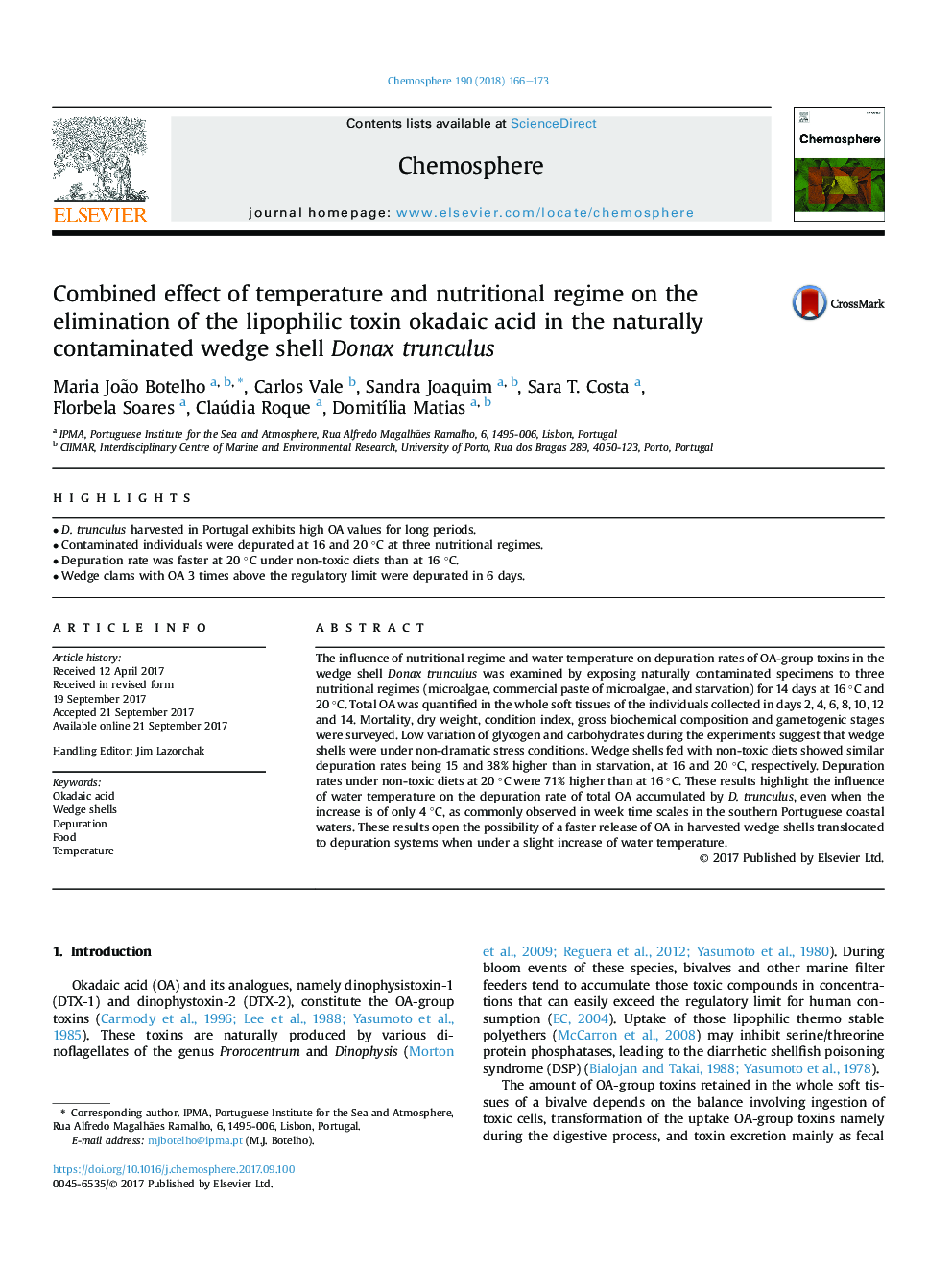| Article ID | Journal | Published Year | Pages | File Type |
|---|---|---|---|---|
| 5745762 | Chemosphere | 2018 | 8 Pages |
â¢D. trunculus harvested in Portugal exhibits high OA values for long periods.â¢Contaminated individuals were depurated at 16 and 20 °C at three nutritional regimes.â¢Depuration rate was faster at 20 °C under non-toxic diets than at 16 °C.â¢Wedge clams with OA 3 times above the regulatory limit were depurated in 6 days.
The influence of nutritional regime and water temperature on depuration rates of OA-group toxins in the wedge shell Donax trunculus was examined by exposing naturally contaminated specimens to three nutritional regimes (microalgae, commercial paste of microalgae, and starvation) for 14 days at 16 °C and 20 °C. Total OA was quantified in the whole soft tissues of the individuals collected in days 2, 4, 6, 8, 10, 12 and 14. Mortality, dry weight, condition index, gross biochemical composition and gametogenic stages were surveyed. Low variation of glycogen and carbohydrates during the experiments suggest that wedge shells were under non-dramatic stress conditions. Wedge shells fed with non-toxic diets showed similar depuration rates being 15 and 38% higher than in starvation, at 16 and 20 °C, respectively. Depuration rates under non-toxic diets at 20 °C were 71% higher than at 16 °C. These results highlight the influence of water temperature on the depuration rate of total OA accumulated by D. trunculus, even when the increase is of only 4 °C, as commonly observed in week time scales in the southern Portuguese coastal waters. These results open the possibility of a faster release of OA in harvested wedge shells translocated to depuration systems when under a slight increase of water temperature.
